The Zagros Mountains, a mountain range in southwestern Iran, extending northwest-southeast from the border areas of eastern Turkey and northern Iraq to the Strait of Hormuz.
The Zagros Mountains are a belt of folded mountains formed by the collision of the African Plate with the Eurasian Plate. On the west, south, and east, the mountains are surrounded by deserts and semi-deserts. The dry grasslands, shrublands, and low-lying deserts of Mesopotamia and southern Iran lie to the west, and the plateau deserts of the Iranian Plateau to the east.
 Zagros mountains; a beautiful natural tourist attraction
Zagros mountains; a beautiful natural tourist attraction
Zagros Geographical features:
The Zagros Mountain, a major mountain range in Central Asia, extends for a distance of 1,500 kilometers in a northwest-to-southeast direction from the border areas between eastern Turkey and northern Iraq across the Iranian Plateau, ending at the Strait of Hormuz in southern Iran. Mount Dena, with a peak achieving an elevation of 14,465 feet, is the highest peak in the Zagros Mountain system.
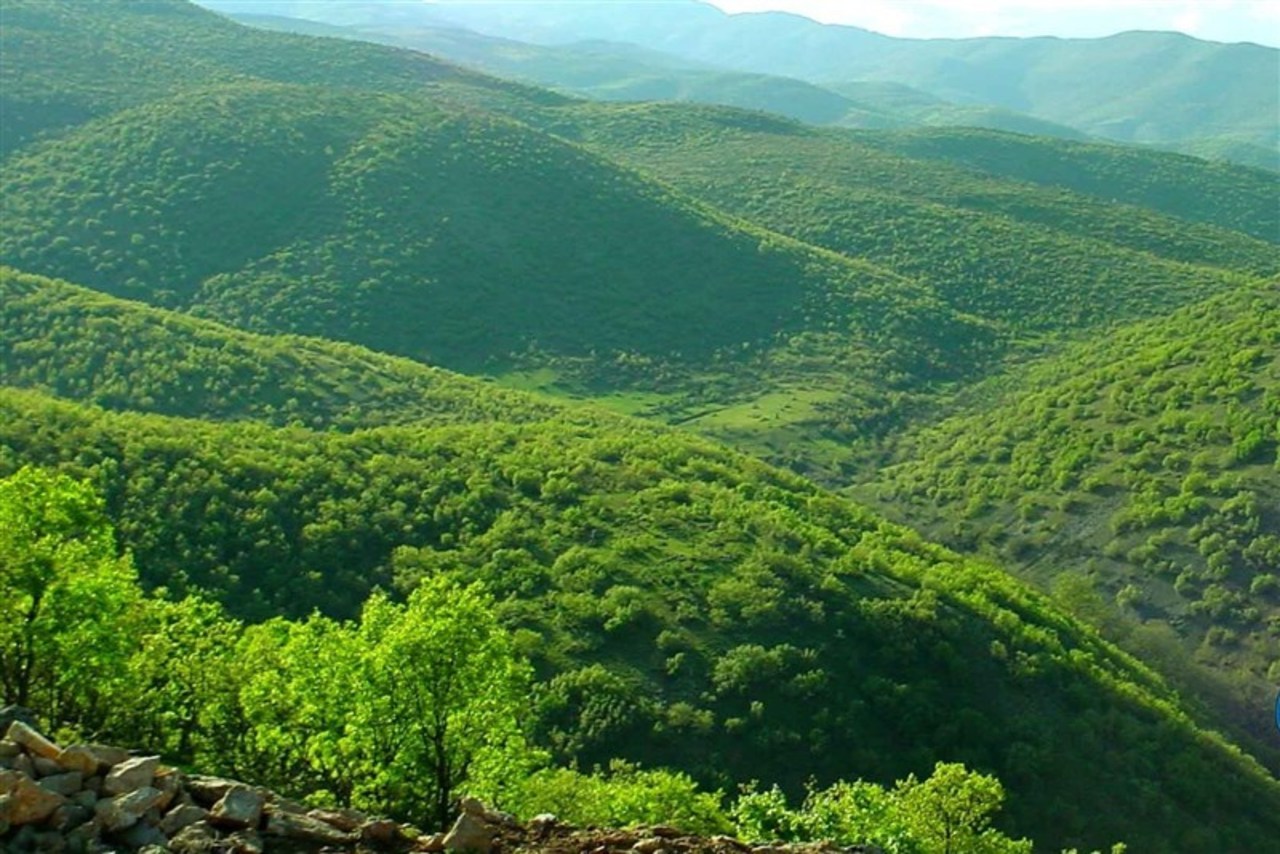 Zagros mountains are covered with various types of trees
Zagros mountains are covered with various types of trees
Limestone and shale rocks from the Mesozoic Era and Paleogene Period form the most commonly seen geological structural materials of the Zagros Mountains. The oldest rocks found here date back to the Precambrian Period.
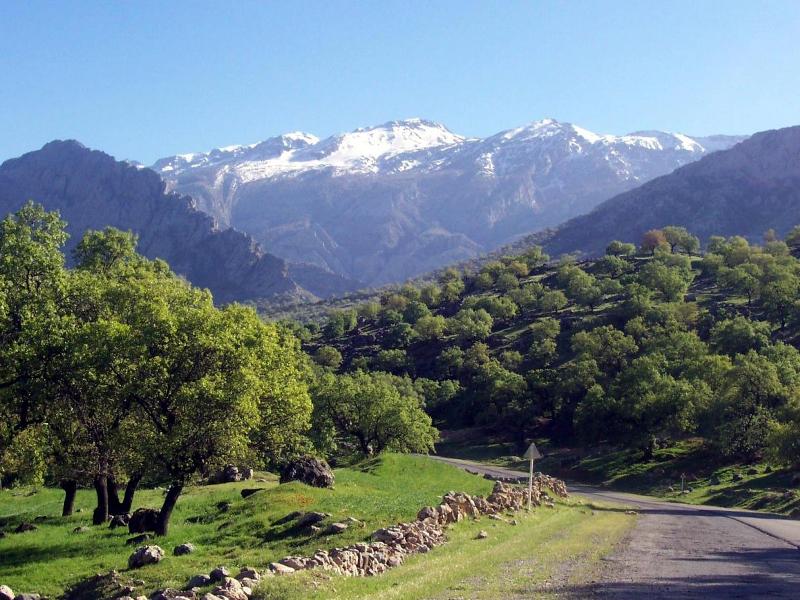 Oaks and wild pistachio are common trees covering Zagros
Oaks and wild pistachio are common trees covering Zagros
The predominant plant community in the mountains is a forest or open woodland of deciduous broadleaf trees, with an understory of steppe shrubs and grasses. Oaks, particularly Persian oak (Quercus brantii), are the characteristic trees, covering over 50% of the Zagros mountains in Iran.
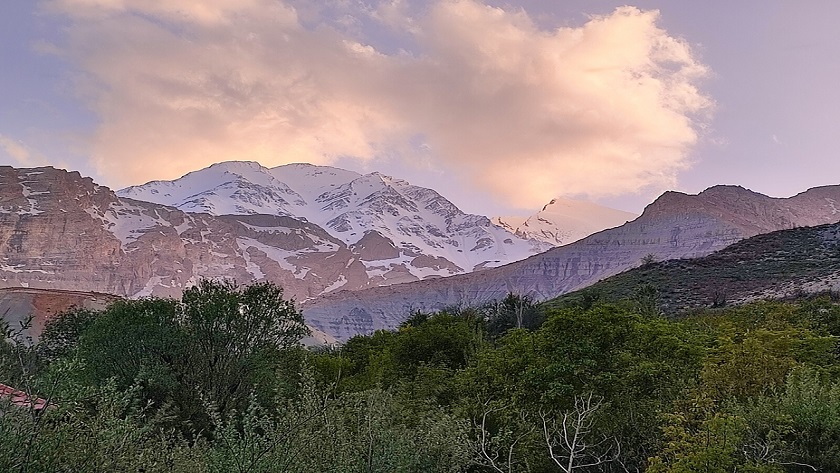 Dena is the tallest point in Zagros
Dena is the tallest point in Zagros
Mount Dena
The highest point in the range is Mount Dena, elevation 14,465 feet (4,409 meters), located in the middle of Zagros. Passes through the mountains are used for reaching the fertile intermontane plains, which lie at elevations above 5,000 feet (1,500 meters).
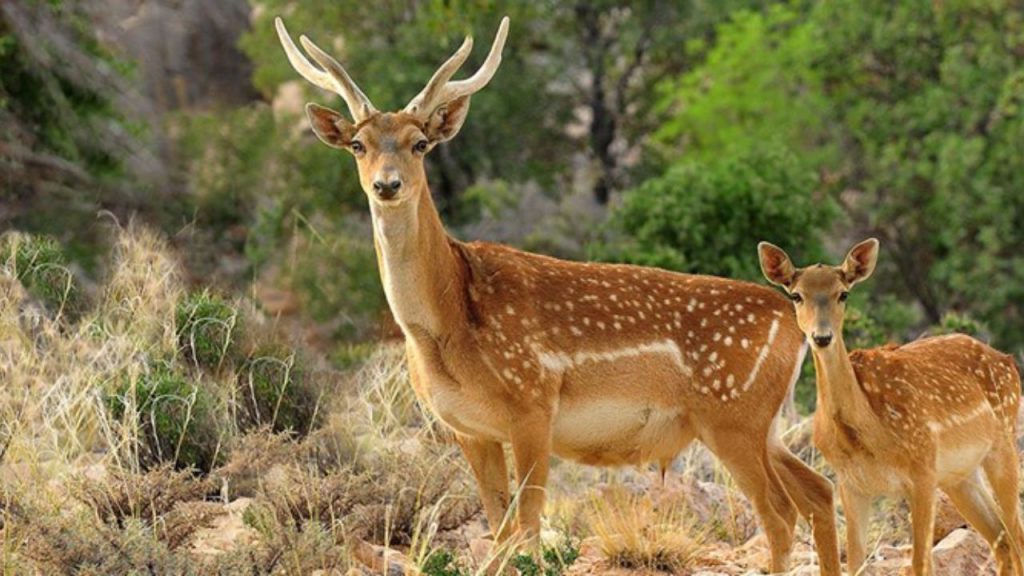 Zagros range hosts a great variety of wildlife
Zagros range hosts a great variety of wildlife
Zagros wildlife
Mammal species roam the rocky slopes of Zagros including the Persian leopard, Syrian brown bear, bezoar ibex, and striped hyena. Lithely leaping amongst branches of oaks, beautiful Persian squirrels make their homes in the oldest and tallest trees; skilled swimmers and competent climbers, they boast luxuriant tails of a splendid russet red.
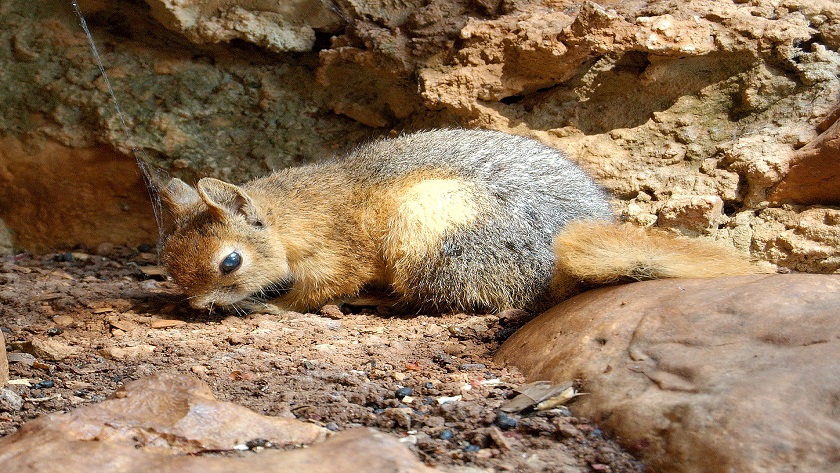 Persian red squirrel
Persian red squirrel
A semi-arid temperate climate dominates, with severe winters and extreme summer aridity. The mean annual precipitation ranges from 400 to 800 mm, while in the winter minimum temperature often drops below -25°C. Forests are largely composed of Brant’s oak, Aleppo oak, and Lebanon oak, with a pistachio-almond shrub layer. In the South, a richer steppe flora develops, where hawthorn, nettle tree, and pear are typical.
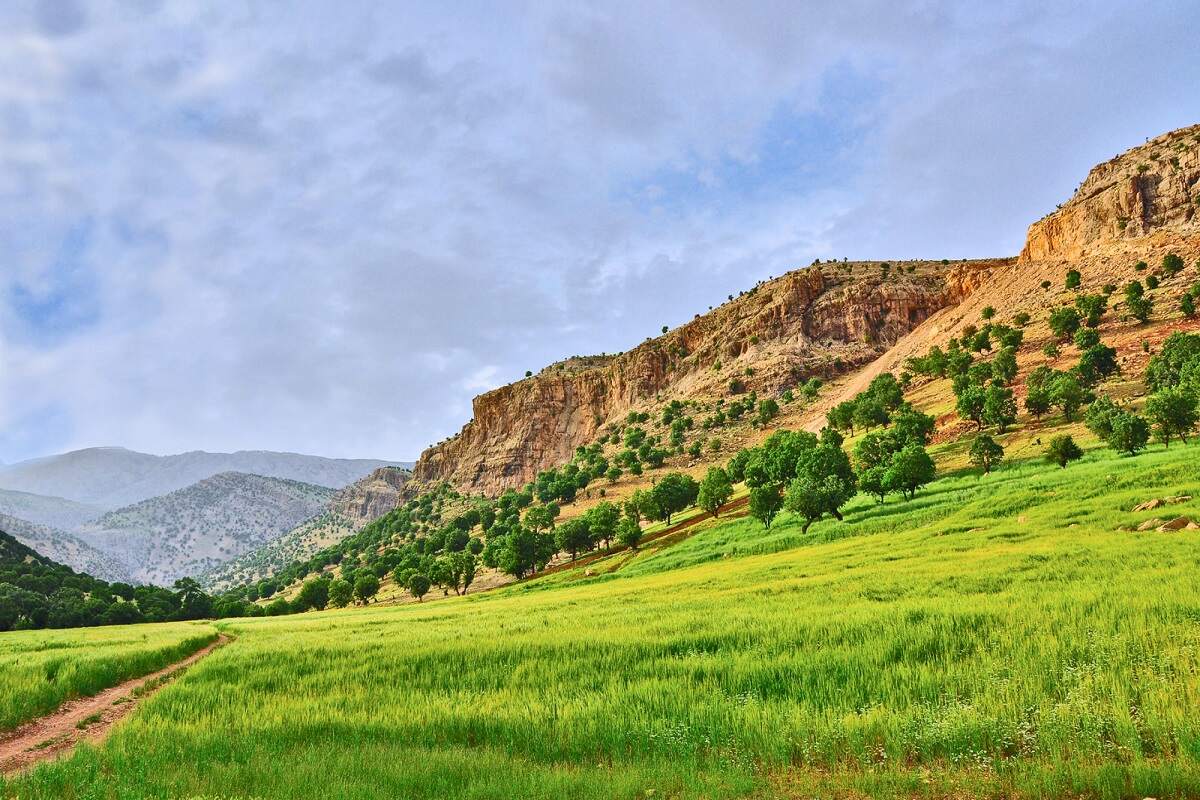 Zagros landscape
Zagros landscape
Gahar lake
Gahar Lake is one of the best sights of Lorestan and one of the largest freshwater lakes in Iran. This lake with its beautiful nature and clear water attracts every tourist; Especially since it is one of the best places to catch trout. If you are interested in mountaineering, it is possible to climb the peaks of Oshtorankooh around the lake, which can be a great option for you.
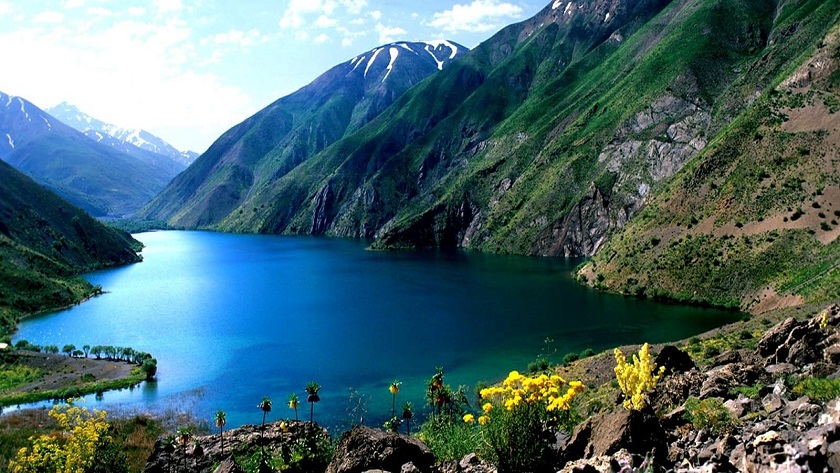 Gahar lake is a true gem in the Zagros mountains
Gahar lake is a true gem in the Zagros mountains
Bisheh Waterfall
Bisheh waterfall is a combination of several small waterfalls that flows into the Cesar river and has been nationally registered by the Ministry of Cultural Heritage, Tourism, and Handicrafts of Iran.
Due to its proximity to several beautiful places such as oak forests, Bisheh village, and a railway station in the Tehran-South route, the waterfall is one of the most attractive sightseeing attractions in Lorestan province.
 Bisheh waterfall in Lorestan is part of Zagros beauties
Bisheh waterfall in Lorestan is part of Zagros beauties
Lorestan province is famous among tourists and nature lovers as a beautiful and wonderful land. Lorestan can also be called the land of unique, beautiful, and magnificent waterfalls.
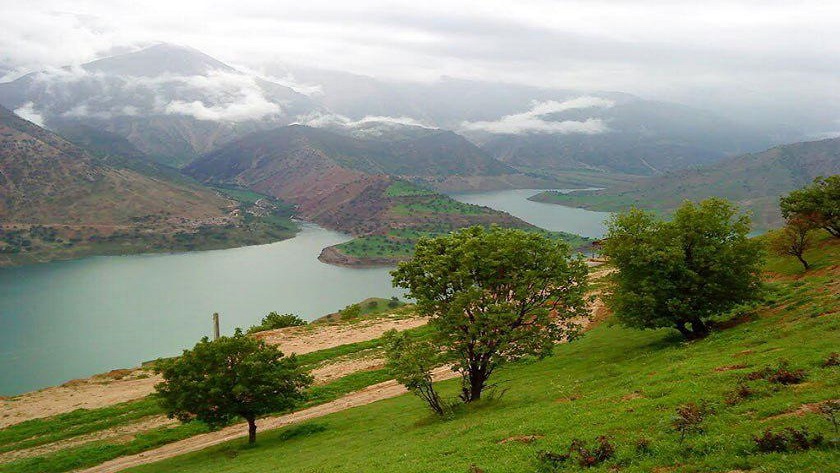 Zagros mountains are true natural gems
Zagros mountains are true natural gems
Tang Tamoradi waterfall
Tang Tamoradi waterfall is located in the west of Yasuj, the capital of Kohgiluyeh and Boyer-Ahmad Province, southwest of Iran, and has a beautiful waterfall with many pools.
In the not far past, access to the village of Tamradi and the area was difficult. Thus, this waterfall is one of the most pristine regions all over the province.
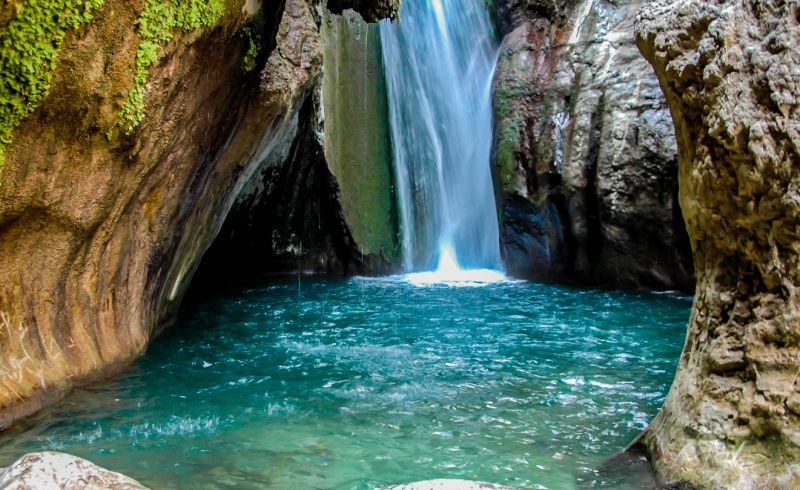 Tang Tamoradi waterfall
Tang Tamoradi waterfall
From the dry and desolate Persian Gulf shore to the rolling, green hills in Golestan province, Iran is one of the most geographically diverse countries worth paying a visit to.
The Zagros Mountains, a 1,500-kilometer mountain range that stretches from northwest Iran to the shores of the Strait of Hormuz, is one of those geographical elements that makes Iran even more fascinating.
Read More:
Amiri Waterfall; lasting freshness in mountains of Mazandaran
Wandering nature in heart of Iran's Kabutrloo waterfall
Tirkan waterfalls in N Iran, land of natural wonders
Ashkan Salehian

